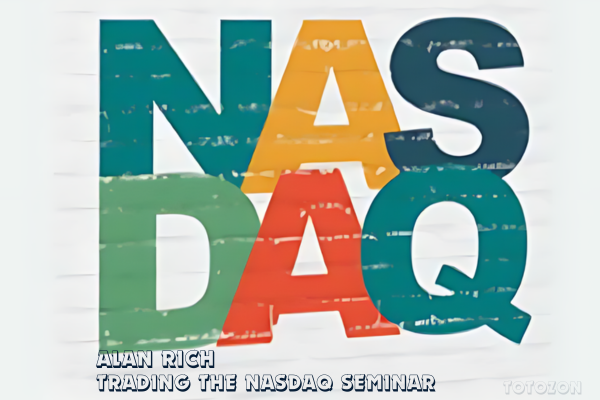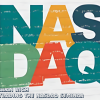-
×
 Home Run Options Trading Course with Dave Aquino - Base Camp Trading
1 × $11.00
Home Run Options Trading Course with Dave Aquino - Base Camp Trading
1 × $11.00 -
×
 The Indices Orderflow Masterclass with The Forex Scalpers
1 × $23.00
The Indices Orderflow Masterclass with The Forex Scalpers
1 × $23.00 -
×
 WondaFX Signature Strategy with WondaFX
1 × $5.00
WondaFX Signature Strategy with WondaFX
1 × $5.00 -
×
 $20 – 52k 20 pips a day challange with Rafał Zuchowicz - TopMasterTrader
1 × $5.00
$20 – 52k 20 pips a day challange with Rafał Zuchowicz - TopMasterTrader
1 × $5.00 -
×
 Butterfly and Condor Workshop with Aeromir
1 × $15.00
Butterfly and Condor Workshop with Aeromir
1 × $15.00 -
×
 Best of the Best: Collars with Amy Meissner & Scott Ruble
1 × $15.00
Best of the Best: Collars with Amy Meissner & Scott Ruble
1 × $15.00 -
×
 The A14 Weekly Option Strategy Workshop with Amy Meissner
1 × $23.00
The A14 Weekly Option Strategy Workshop with Amy Meissner
1 × $23.00 -
×
 Algo Trading Masterclass with Ali Casey - StatOasis
1 × $23.00
Algo Trading Masterclass with Ali Casey - StatOasis
1 × $23.00 -
×
 The Naked Eye: Raw Data Analytics with Edgar Torres - Raw Data Analytics
1 × $8.00
The Naked Eye: Raw Data Analytics with Edgar Torres - Raw Data Analytics
1 × $8.00 -
×
 0 DTE Options Trading Workshop with Aeromir Corporation
1 × $15.00
0 DTE Options Trading Workshop with Aeromir Corporation
1 × $15.00 -
×
 Compass Trading System with Right Line Trading
1 × $39.00
Compass Trading System with Right Line Trading
1 × $39.00 -
×
 ICT Prodigy Trading Course – $650K in Payouts with Alex Solignani
1 × $15.00
ICT Prodigy Trading Course – $650K in Payouts with Alex Solignani
1 × $15.00 -
×
 Crypto Trading Academy with Cheeky Investor - Aussie Day Trader
1 × $13.00
Crypto Trading Academy with Cheeky Investor - Aussie Day Trader
1 × $13.00 -
×
 High Probability Trading Using Elliott Wave And Fibonacci Analysis withVic Patel - Forex Training Group
1 × $10.00
High Probability Trading Using Elliott Wave And Fibonacci Analysis withVic Patel - Forex Training Group
1 × $10.00 -
×
 The Orderflows Trade Opportunities Encyclopedia with Michael Valtos
1 × $8.00
The Orderflows Trade Opportunities Encyclopedia with Michael Valtos
1 × $8.00 -
×
 SQX Mentorship with Tip Toe Hippo
1 × $23.00
SQX Mentorship with Tip Toe Hippo
1 × $23.00 -
×
 AI For Traders with Trading Markets
1 × $31.00
AI For Traders with Trading Markets
1 × $31.00
Trading The Nasdaq Seminar with Alan Rich
$6.00
File Size: Cooming soon!
Delivery Time: 1–12 hours
Media Type: Online Course
Content Proof: Watch Here!
You may check content proof of “Trading The Nasdaq Seminar with Alan Rich” below:

Trading The Nasdaq Seminar with Alan Rich
Introduction to the Nasdaq Seminar
Trading the Nasdaq can be a rewarding yet challenging endeavor. Alan Rich, a seasoned trader and market analyst, offers a comprehensive seminar on mastering the Nasdaq. This article delves into the key insights and strategies from his seminar, equipping traders with the knowledge to navigate this dynamic market.
Understanding the Nasdaq
What is the Nasdaq?
The Nasdaq, short for the National Association of Securities Dealers Automated Quotations, is a global electronic marketplace for buying and selling securities. It is known for its high-tech and biotech companies.
Importance of the Nasdaq
The Nasdaq is a leading indicator of the technology sector and is often seen as a barometer for the overall health of the tech industry.
Alan Rich’s Approach to Trading the Nasdaq
Rich’s Trading Philosophy
Alan Rich emphasizes a disciplined approach to trading, focusing on technical analysis, market trends, and risk management. His philosophy is to trade smart, not hard, by leveraging technology and data-driven insights.
Key Principles of Rich’s Methodology
- Technical Analysis: Using charts and indicators to identify trading opportunities.
- Market Trends: Understanding and following market trends to make informed decisions.
- Risk Management: Implementing strategies to minimize losses and protect gains.
Technical Analysis Techniques
Understanding Price Charts
Price charts are fundamental tools in technical analysis. They help traders visualize market movements and identify trends.
Types of Price Charts
- Line Charts: Simplest form, showing closing prices over a period.
- Bar Charts: Display opening, closing, high, and low prices for each period.
- Candlestick Charts: Provide more detailed information about price movements.
Using Moving Averages
Moving averages smooth out price data to identify the direction of the trend. Common types include:
- Simple Moving Average (SMA): The average price over a set period.
- Exponential Moving Average (EMA): Gives more weight to recent prices, making it more responsive.
Identifying Support and Resistance Levels
Support and resistance levels are critical for making trading decisions. These levels indicate where the price is likely to find a floor or ceiling.
Applying Indicators
Technical indicators provide additional insights into market trends. Key indicators include:
- Relative Strength Index (RSI): Measures the speed and change of price movements.
- Moving Average Convergence Divergence (MACD): Identifies changes in the strength, direction, momentum, and duration of a trend.
Market Trends and Patterns
Recognizing Market Trends
Understanding market trends is crucial for trading the Nasdaq. Trends can be upward (bullish), downward (bearish), or sideways (neutral).
Common Chart Patterns
Chart patterns help predict future price movements. Important patterns include:
- Head and Shoulders: Indicates a reversal of a trend.
- Double Top and Double Bottom: Suggest potential trend reversals.
- Triangles and Flags: Show continuation patterns in the market.
Risk Management Strategies
Setting Stop-Loss Orders
Stop-loss orders protect traders from significant losses by automatically selling a security when it reaches a certain price.
Using Position Sizing
Position sizing involves determining the number of shares to buy or sell based on the size of your account and risk tolerance.
Diversifying Investments
Diversification reduces risk by spreading investments across different sectors or assets.
Practical Applications from the Seminar
Case Study: Successful Trade
A trader applied Rich’s techniques to a tech stock, using technical indicators to identify an entry point and setting a stop-loss to manage risk. The result was a profitable trade with minimized risk.
Real-World Examples
Rich’s seminar includes numerous real-world examples, demonstrating how his strategies have been successfully applied in various market conditions.
Tools and Resources for Traders
Trading Platforms
Selecting the right trading platform is essential for executing trades efficiently. Look for platforms that offer robust charting tools, real-time data, and low fees.
Educational Resources
Continuous learning is crucial. Alan Rich recommends using books, online courses, and trading communities to stay informed and improve skills.
Market News and Analysis
Keeping up with market news and analysis helps traders make informed decisions. Use reliable sources to stay updated on market trends and economic events.
Common Challenges in Trading the Nasdaq
Market Volatility
The Nasdaq can be highly volatile, with rapid price movements. Traders need to be prepared for sudden changes and manage their risk accordingly.
Emotional Decision-Making
Emotions can cloud judgment and lead to impulsive decisions. Following a disciplined trading plan helps mitigate emotional bias.
Staying Informed
The fast-paced nature of the Nasdaq requires traders to stay constantly informed. Regularly reviewing market news and updates is essential.
Conclusion
Trading the Nasdaq with insights from Alan Rich’s seminar equips traders with the tools and strategies needed to succeed. By mastering technical analysis, understanding market trends, and implementing robust risk management practices, traders can navigate the Nasdaq with confidence.
Frequently Asked Questions
1. What is the main focus of Alan Rich’s seminar?
Alan Rich’s seminar focuses on technical analysis, market trends, and risk management to help traders succeed in the Nasdaq market.
2. How can technical analysis help in trading the Nasdaq?
Technical analysis uses charts and indicators to identify trading opportunities and predict future price movements, aiding in informed decision-making.
3. What are some key indicators used by Alan Rich?
Key indicators include moving averages, RSI, and MACD, which help identify trends and potential entry and exit points.
4. Why is risk management important in trading?
Risk management is crucial to minimize losses and protect gains, ensuring long-term trading success.
5. How can I stay informed about Nasdaq market trends?
Use reliable sources for market news and analysis, and continuously educate yourself through books, online courses, and trading communities.
Be the first to review “Trading The Nasdaq Seminar with Alan Rich” Cancel reply
You must be logged in to post a review.
Related products
Forex Trading
The Complete Guide to Multiple Time Frame Analysis & Reading Price Action with Aiman Almansoori
Forex Trading
Forex Trading
Forex Trading
Forex Trading
Quantamentals – The Next Great Forefront Of Trading and Investing with Trading Markets
Forex Trading
Forex Trading
Forex Trading
Forex Trading














Reviews
There are no reviews yet.